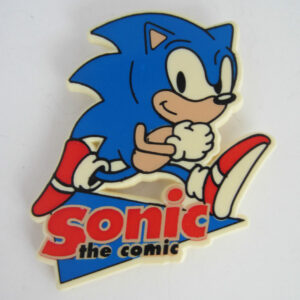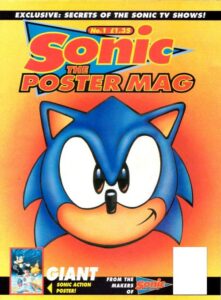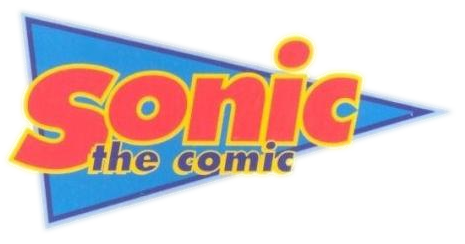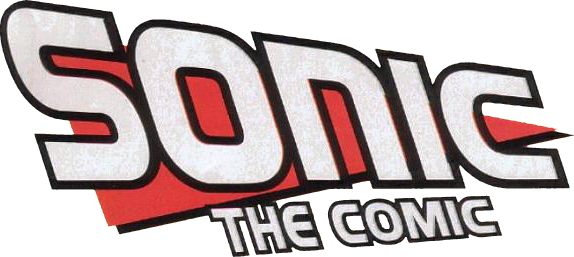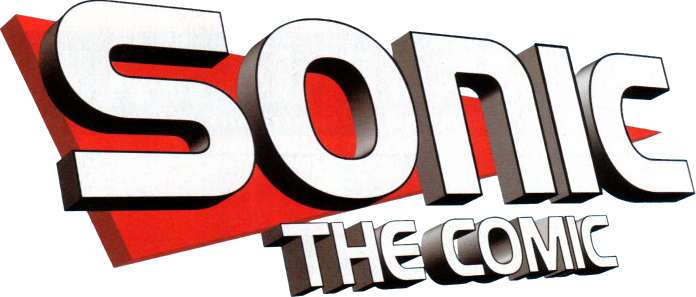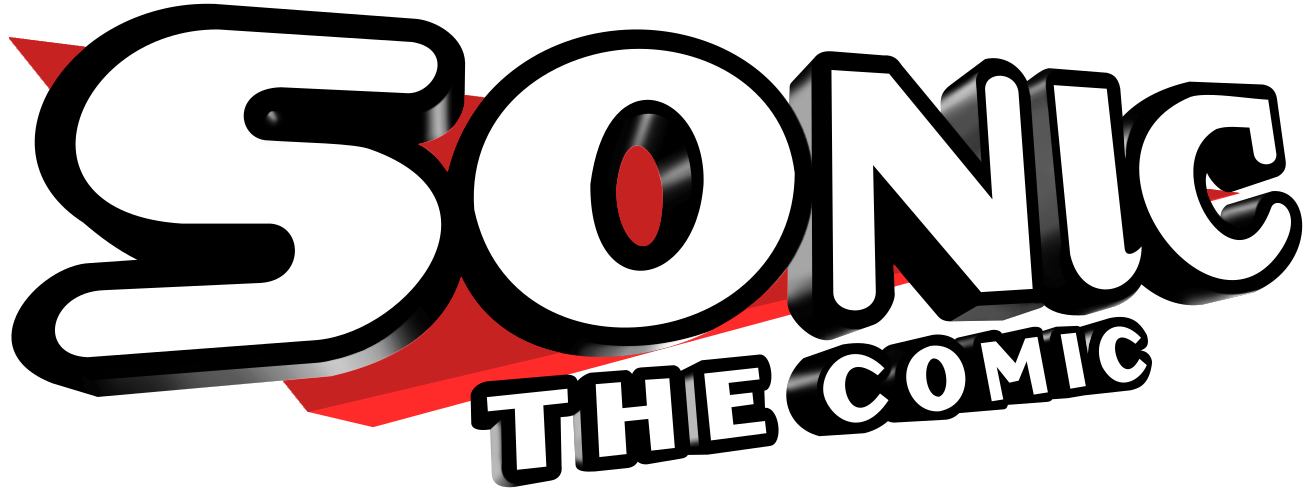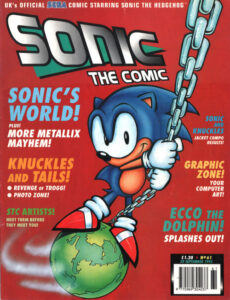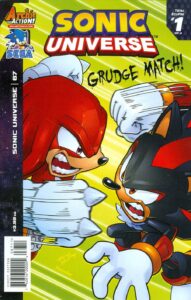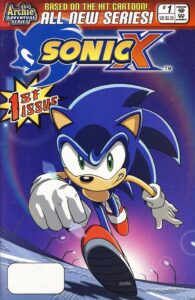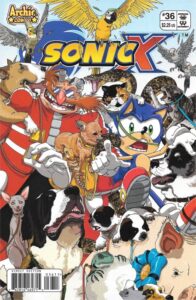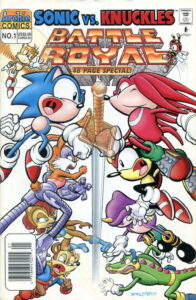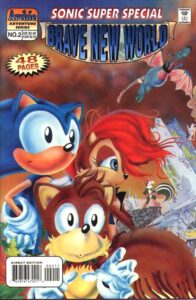in: Comics
Sonic the Comic
Not to be confused with Sonic Comic, the Sonic Channel web series.
Sonic the Comic, often referred to as STC, was a British comic series that drew loose inspiration from Sega’s Sonic the Hedgehog video game franchise. Serving as the official Sega comic in the United Kingdom, it showcased tales involving Sonic the Hedgehog, various Sega video game personas, and even characters associated with Sega’s gaming consoles. Fleetway Editions published this comic series from May 1993 to January 2002.
Staff
- Writers: Nigel Kitching, Lew Stringer, Mike Hadley, Mark Millar, Steve MacManus, Ed Hillyer, Mark Eyles.
- Artists: Richard Elson, Nigel Dobbyn, Casanovas, Carl Flint, Woodrow Phoenix, Roberto Corona, Mick McMahon, John M. Burns, Andy Pritchett, Steve White, Nigel Kitching, Ed Hillyer
- Letterers: Ellie de’Ville, Elitta Fell, Tom Frame
- Inkers: Mike Hadley
- Colourists: Mike Hadley
- Pencillers: Ferran Rodriguez
- Cover artists: Dermot Power, Mike Hadley, Ed Hillyer
- Editors: Andy Diggle, Deborah Tate, Steve MacManus, Richard Burton
- Features editors: Audrey Wong
- Editorial directors: Colin Shelbourn
- Managing directors: Julie Goldsmith, Rob McMenemy
- Marketing managers: Rob McMenemy, Doug Pocock
- Product managers: Jess Manu.
- Assistant directors: Deborah Tate, Audrey Wong
- Designers: Gary Knight, Timothy Read
- Promotions: Jane Ballard, Michelle Brown
- Advertising: Sarah Connell, Steve Goldsmith
- Production: Sarah Colley
- Publishers: Rob McMenemy
Format
Sonic the Comic initially cost 95 pence when it was first published and saw its price rise to £1.35 by the time the final issue was released. The comic usually contained four comic strip stories, each with different writers and artists. The first story, typically seven pages long, focused on Sonic (except for one issue that began with Tails). In the early issues, the remaining three stories featured various Sega game characters.
Over time, Sonic’s influence expanded, and other character-based stories took the place of the additional Sega game character strips. These included stories centered on characters like Tails, Knuckles, Amy, Chaotix, and the anthology “Sonic’s World,” which covered events in the Sonic the Comic universe not covered in the main character strips.
Beyond the comic strips, Sonic the Comic regularly featured content related to Sega video gaming. Sections like the “Q-Zone” provided video game tips and cheats, while the “News Zone” and “Review Zone” offered updates and reviews on Sega games. Readers’ artwork was featured in the “Graphic Zone,” and letters from readers were included in “Speedlines.”
The comic also came with special gifts for its readers, ranging from stickers (including a scratch and sniff sticker of Sonic’s shoes) and candy to more substantial items like a ruler designed after Sonic.
The comic had a mascot named Megadroid, a robot assembled from parts of a Sega Mega Drive. Megadroid was used by the editors of Sonic the Comic to respond to letters, provide story recaps, and share general magazine news. He acted as a bridge between the readers (whom he called “boomers”) and the “humes who think they’re in charge.”
In 1998, Megadroid was discontinued, leading to the disappearance of the “Speedlines” letter page. Speedlines briefly returned in 2000, although it was no longer a regular feature, and the letters were purportedly answered by Sonic himself, who was actually editor Andy Diggle and later Steve MacManus.
Non-Sonic Stories
In the early days of Sonic the Comic, most issues featured three out of four comic strips that were based on games other than Sonic. However, over time, these non-Sonic strips were gradually replaced by spin-offs featuring Sonic and his universe.
- Shinobi (3 series)
- Streets of Rage (3 series)
- Kid Chameleon (2 series)
- Eternal Champions (2 series)
- Golden Axe (2 series)
- Decap Attack (3 series, initially)
- “Pirate Sonic the Comic” (1 series)
- Marko’s Magic Football (1 series)
- Ecco the Dolphin (2 series)
- Wonder Boy (2 series)
- Sparkster [Rocket Knight Adventures] (1 series)
- Mutant League Football (1 series)
- Shining Force (1 series)
- “Megadroid” (2 series)
Among these spin-off strips, “Pirate Sonic the Comic” and the “Megadroid” strips were unique in that they were not based on existing video games. “Pirate Sonic the Comic” was inspired by a series of advertisements for the Sega Mega Drive and Sega CD, while the “Megadroid” strips drew their inspiration from the host robot character of Sonic the Comic.
Decap Attack
“Decap Attack” was originally an adaptation of a Mega Drive game. It gained significant popularity and had a longer run compared to other non-Sonic strips, in part due to the editor’s preference, and it eventually became a pet project of writer Nigel Kitching.
Demise
The decline of Sonic the Comic began when budget cuts led to a reduction in the number of pages from 36 to 32 in 1997. This resulted in the removal of sections like news, game reviews, and game tips. Despite being one of Fleetway’s top-selling comics in 1998, the cost-cutting measures continued. Starting with issue 133 in July of that year, one strip per issue was replaced with reprints as part of Fleetway’s five-year reader cycle policy. Later in the year, the mascot Megadroid was removed along with the “Speedlines” letters page. Two more strips were eventually replaced by reprints, leaving only the main strip and the cover as new content from issue 157 onwards. This meant no new supporting character strips were published, and the main strip was the only new material in the comic.
During this period, the main strip’s stories were labeled under the “Time Zone” banner and were mostly set on Shanazar, with later stories involving dimensional portals leading to other dimensions and Earth’s history. This editorial preference was unpopular with many fans since it excluded Mobius and most main characters besides Sonic and Amy.
Nigel Kitching, one of the comic’s writers, was let go after issue 157 but returned with issue 175 after a change in the editor. Despite a strong final story by writer Lew Stringer and Kitching’s comeback in 2000, Egmont decided to make the comic fully reprint from issue 185, though they still included new covers. This decision came suddenly, with even Kitching being unaware until shortly before the final issue was published. This led to the last story ending with some unresolved loose ends from earlier stories.
Fully-reprint issues continued until issue 223, which reprinted the four-part storyline “The Evil Empire” and featured an article by Nigel Kitching about his time working on the comic.[2]http://groups.yahoo.com/group/sonicthecomic/message/9679
Sonic the Comic – Online!
Sonic the Comic – Online! (commonly referred to as StC-O) is an unofficial web-based continuation of the Sonic the Comic series. It picks up where the final full-reprint issue, #223, left off, starting with issue #224.
Several significant events have occurred in the Sonic the Comic – Online! series. Dr. Zachary, who had been missing for a long time, emerged as a primary antagonist in the early issues. He released Vichama, awakened Shadow the Hedgehog, and ordered Shadow to destroy the Special Zone. Tikal also made a return, but she lost her memories of the Ancient Echidna race, much to Knuckles’ sorrow. She now resides on the Floating Island. The destruction of the Special Zone led to the emergence of a criminal gang called The Family, consisting of Mafia-style insects led by the enigmatic Don Long-Legs. They have quickly become the dominant underworld force in Mobius and clashed with the Freedom Fighters.
Sonic faces challenges as well, dealing with a media smear campaign orchestrated by the Kane Broadcasting Company. He is also framed for numerous crimes. Ultimately, it’s revealed that a Metallix composed of liquid alloy allowed himself to be imprisoned in Sonic’s place, planning to attack the Freedom Fighters once they freed him. This scheme aimed to undermine the trust of the citizens of Mobius in Sonic. Faced with this failure, Sonic flees the planet, leaving Tails with the mission of protecting Mobius. Meanwhile, Robotnik, his broken body connected to a supercomputer linked to his Badniks’ systems, launches a new worldwide offensive.
It’s important to note that Sonic the Comic – Online! does not have the official backing of Egmont Fleetway or Sega. However, many original Sonic the Comic writers and artists have praised the website and supported its continuation. Nigel Kitching, one of the original creators, occasionally contributes to the site’s message boards. The project is considered “unofficially official” by Sonic the Comic fans and former creators, as it’s the closest thing to an official continuation of the series. Sonic the Comic – Online! has also received recognition and nominations for awards in the comic industry, such as the Diamond National Comics Award and the Eagle Awards.[3]http://www.downthetubes.net/news_archive/2004/06june2004.html[4]http://www.eagleawards.co.uk/nominate.asp
The website includes a Message Zone, a forum where thousands of members discuss various topics, expanding from discussions about the online issues to encompass a wide range of subjects.



